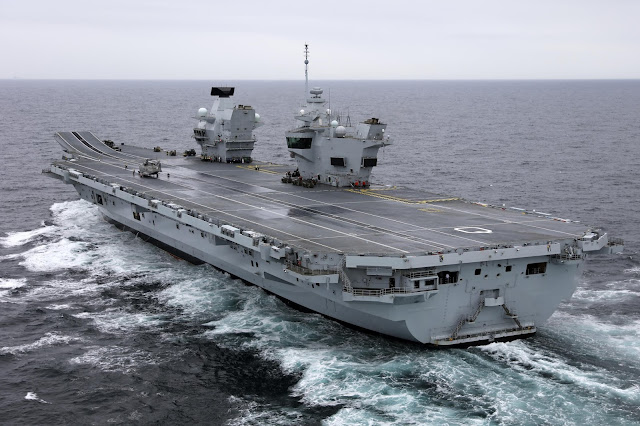Britain’s largest ever aircraft carrier Queen Elizabeth has some flaws
One of the concerns that the new aircraft carrier Queen Elizabeth will not have enough crew trained to operate her.
The Queen Elizabeth aircraft carrier is currently under sea trials and is the largest warship ever built by the Royal Navy.
The ordered fighters for her decks are too expensive and weak, the design itself is flawed and that there will not be enough royal navy ships to protect her.
The ship has absorbed £6bn ($7.6bn) worth of investment and has taken around 10 years to come to fruition.
The Royal Navy hopes that after a long period of underinvestment these two new supercarriers will bring prestige capability and prowess back to the UK’s naval forces.
These are enormously expensive ships and the project overran its price estimation by close to double (£6.2 billion ($7.9bn), up from the £3.5 billion ($4.4bn) projected in 2007).
For that money, only two ships have been obtained and that does not count the order for the F-35bs needed for each ship.
Which will cost around $100m per aircraft and 26 minimum will be needed for each ship. Other criticisms remain around the designs of the ships.
Which have doubled down on the F-35 and won’t be able to launch alternative British aircraft such as the Eurofighter Typhoon.
The F-35 project itself has taken an enormous amount of flak too on aspects of its design and huge cost.
Traditionally carriers and before them, battleships, would be backed up with a large escort of other ships in order to protect them, made up of destroyers and frigates.
The Royal Navy has in numerous parliamentary hearings, been shown to not have anywhere near enough modern and reliable ships for its commitments currently.
Let alone with two of the largest aircraft carriers in the world to defend.
On operations, a carrier may only have four destroyers available to protect it along with a handful of frigates which is considered very weak indeed.
There is also a growing concern that aircraft carriers themselves may be becoming defunct as a vessel class in a modern naval battle.
An advanced force of modern missile frigates could be able to fire missiles at a rate which will be able to overwhelm the Elizabeth Class, particularly if it has limited support.
All U.S. and French aircraft carriers are nuclear powered, but not UK carriers.
Nuclear-powered carriers only need refueling once over their 50-year lifespan, compared to the Queen Elizabeth-class, which will need refueling every 10,000 nautical miles.
The benefit of nuclear is that they can stay at sea almost indefinitely and during times of war or fuel shortage this could make the difference.
The downside of nuclear power is the cost of decommissioning, which can add up to many hundreds of millions of dollars at the end of a vessels life.







Comments
Post a Comment